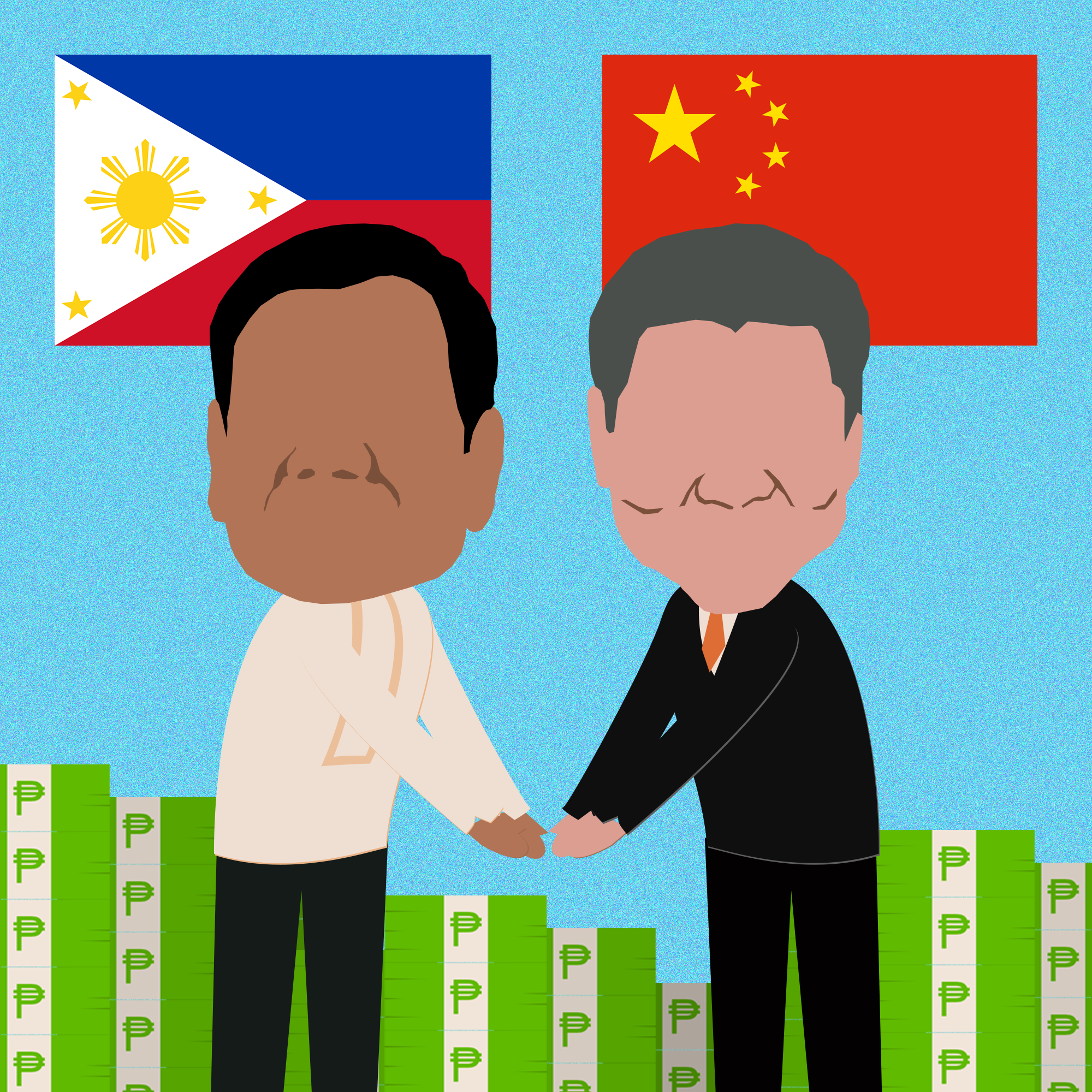Disaster or no disaster, this year’s Peasant Month again finds the Filipino farmer still deep in distress from the effects of unprecedented land-use conversion, land monopoly, high rent, usury and low wages, lack of government support and a litany of soci
IBON Features – Recent tropical storms Ondoy and Pepeng reportedly caused P20 billion worth of damages to agriculture and destroyed crops amounting to P11 billion. But disaster or no disaster, this year’s Peasant Month again finds the Filipino farmer still deep in distress from the effects of unprecedented land-use conversion, land monopoly, high rent, usury and low wages, lack of government support and a litany of social injustices-or the failure that was the Comprehensive Agrarian Reform Program (CARP).
The CARP Extended with Reforms or CARPER, which Congess passed this year, will be hounding the peasantry for another five years as it retains the original CARP’s pro-landlord provisions.
Unprecedented land use conversion
The conversion of agricultural lands to commercial use has left farmers only poorer and with little or no land to till. Because of land use conversions (LUCs), farm area fell by 304,078 hectares between 1991 and 2002. Under the Arroyo administration, more than 20,000 hectares of agricultural lands awarded to farmers outside Metro Manila have been canceled, displacing more than 10,000 farmer families. In 1995, a total of 2,780 emancipation patents (EPs) and certificates of land ownership award (CLOAs) covering 16, 213.36 hectares awarded to peasants were canceled mostly due to LUCs. In December 2006, the number ballooned to 108,141 EPs/ CLOAs canceled, covering 204,579 hectares.
No amount of lip service by the Arroyo administration calling for any moratorium can possibly recall these cases of extensive land use conversion: In 2007, through Executive Order 647, 21 barangays of the municipality of Nasugbu, Batangas covering 14,000 hectares of rice lands, sugar farms and coastal areas were declared as a major tourism destination and part of the Tourism Economic Zone. Last year, by virtue of DOJ Opinion No. 44, the Department of Agrarian Reform (DAR) approved 22,900.34 hectares of agricultural lands for exemption from CARP coverage in the Central Luzon and Calabarzon regions for conversion to either residential or commercial use. Also last year, presidential brother-in-law Ignacio “Iggy” Arroyo pushed for the conversion of his family’s 157-hectare Hacienda Bacan into agro-industrial uses, particularly for the production of ethanol. These cases of LUCs alone already cover 37,057 hectares of farmlands, surpassing 11,721 hectares approved for LUC during the Estrada administration and 19,726.53 hectares under Ramos.
Earlier cases of farmlands converted for commercial, residential and eco-tourism ventures have also led to CLOA cancellations and the eviction of hundreds of peasant families such as the First Cavite Industrial Estate by Marubeni Corporation of Japan involving 232 hectares; Hacienda Looc in Batangas with 8,650 hectares, 400 hectares in Aplaya Laiya, Batangas and 218 hectares in Silang and Dasmarinas, Cavite.
Land monopoly fortified
While government claims that the CARP has successfully reached 80% of its reduced scope, genuine land distribution remains elusive. Only 1% of the entire Philippine population still owns almost 1/5 of the country’s total agricultural lands while 2 million farmers are left to divide another 1/5 among themselves.
Land reform programs have been slow to acquire most of privately owned-land, including commercial farms and plantations. According to Anakpawis Rep. Rafael Mariano, only 1.9 million hectares out of 6.2 million hectares of distributed agricultural lands from 1988 to present were private. Still, data from the Department of Agrarian Reform (DAR) in 2008 shows that the remaining 1.2 million hectares of private agricultural lands for distribution under CARP’s Compulsory Acquisition actually constitutes the largest percentage of the total remaining undistributed land at 94 percent. Meanwhile, 82% of the supposedly distributed agricultural lands still have pending cases and have not yet been physically distributed. It should also be noted that the scope of CARP had actually been reduced from 10.3 million hectares in 1988 to only 8.1 million hectares.
The Voluntary Land Transfer (VLT) scheme has also been proven to undermine genuine land distribution, as DAR overseers attest that a huge 70% of VLTs involved landlords evading CARP coverage. Though DAR data shows the VLT mode’s accomplishment to have soared to 248% this year, its character of direct land transfer from landlords to farmers with minimal government intervention allowed relatives to be named as beneficiaries; DAR reports were tampered with to count ordinary, non-CARP land sales as CARP accomplishments and “joint ownership” arrangements between landlords, agribusinesses and farmers saw the latter at the losing end. The World Bank’s concrete recommendation of completing CARP through a market-assisted land reform towards privatizing communal lands and promoting land markets, suits globalization and endorses VLTs, with limited government subsidy and assistance from international financial institutions. Thus, VLT and the voluntary offer to sell (VOS) modes are encouraged by DAR more than it perseveres in Compulsory Acquisition.
It is therefore not surprising that the landscape of land ownership in the Philippines has barely changed. In fact, big landlords remain dominant around the country, such as Danding Cojuangco Jr. owning 30,000 hectares in Negros, Isabela, Cagayan, Davao del Sur, Palawan and Cotobato; the Cojuangcos, Faustino Dy and Juan Ponce Enrile sharing 13,085 hectares in Iligan, Isabela; the Zobel-Ayalas with more than 12,000 hectares of land in Calatagan, Batangas and the Floreindo Family with 11,048 hectares in Davao and Davao del Norte.
Unjust rent, low wages and usury
Apart from the ages-old miserable working conditions of Filipino peasants prevalent in foreign and local agribusinesses, haciendas and farms, feudal rent, low wages and usury continue to burden the Filipino peasant.
The 60-40 to 10-90 distribution of gross harvest favorable to landlords remains intact. In the Southern Tagalog and Eastern Visayas, studies by farmers’ groups KASAMA-TK and SAGUPA-SB show that land tillers still receive a low 19%-21% of the gross sales of harvested palay.
The actual amount peasants earn fall way below the agricultural daily minimum wages that range from P151 to P212 nationwide: P20 per day in Negros, P50 in Samar and P69 in Cagayan Valley. In the 6,000-hectare sugar lands of Hacienda Luisita, farm workers receive a measly weekly pay of P9.50, in gross violation of the P273 daily wage set by the Regional Wage Board (RWB). In the sugar plantations of Batangas, over 50,000 agricultural workers receive P35 to P150 per day, still below the P211 set by the RWB. In the sugar lands of Negros where the RWB set wages at P203 per day, farm workers receive only P30 to P200 per day. In Far South Mindanao, where the RWB prescribed P205 per day for wages, farm workers get only P80 to P130 daily.
Extreme poverty compels farmers to usury, where they are obliged to pay high interest rates for credit. It ranges from 15%-35% per cropping season up to anywhere between 100%-300% per harvest and 400% per year.
Lack of support
That Agrarian Reform Communities (ARCs) have not progressed both in scope and in terms of support received demonstrates how CARP is bound to fail even despite its five-year extension. Chosen by government to supposedly focus CARP funds on, in these barangays, agribusiness companies engage Agrarian Reform Beneficiaries (ARBs) in contract growing, joint venture or lease arrangements for the production of crops for export. These were supposed to showcase the success of CARP.
However, only 3 out of 10 CARP beneficiaries are covered by 1,959 ARCs. ARCs also suffer from lack of government support. Only 7.9 out of 10 ARCs or 655,437 beneficiaries have received official development assistance. Most of these beneficiaries reportedly have pending land disputes, hinting that despite the hype, the farmers have not benefited substantially at all.
The CARP itself suffers from lack of support. According to a German Technical Assistance (GTZ)-commissioned review of the CARP in 2007, CARP lacked the support services and credit that farmer beneficiaries needed to prosper. The study revealed DAR’s admission “that about 3 million out of the 4 million farmer-beneficiaries did not receive any support services.” The GTZ further exposed that “only 50% of the required funding for CARP was allotted by government” and “60% of the funds allotted went mainly to personnel salaries.” This is amid the decline of the share of land distribution in the national budget from 8% in 2004 to merely 3% in 2009.
CARPER, another tropical depression?
For Filipino farmers, the CARPER is another storm to be weathered, a strengthening of the anti-peasant CARP. Under it there is no intention to plan agriculture and boost local productivity primarily to meet the people’s basic needs. It is seen to accelerate the maximization of ARCs for the benefit of big local and foreign agribusinesses, as well as perceived cronies of the administration.
In the wake of the recent typhoons, the Philippine Forest Corporation cited that the massive plantation of biofuel source jatropha provides sustainable income for small farmers. Note that of the 375,091 hectares planted to jatropha, 10,000 have been leased to Teves Co. owned by the brother of close Arroyo ally and Finance Secretary Margarito Teves, and 7,450 hectares were committed in a joint venture with the local government of Camarines Sur headed by the son of another Arroyo ally Cong. Luis Villafuerte, who has recently advanced in grabbing 375 hectares of farmlands in San Miguel Bulacan for commercial development.
This October, no less than the US Secretary of Agriculture and 20 American agribusiness firms are coming to the Philippines in a “mission” to form partnerships with 200 local companies in in accordance with the US Agricultural Trade and Assistance Act. In July, South Korean Firm Jeonnam Feedstock Ltd has leased 94,000 hectares of farmland in Mindoro to grow animal feeds.
According to the KMP, President Arroyo is planning to sell 3 million hectares to foreign agro-corporations, reserving 1 million hectares for the Cojuangco-Kuok Group partnership, another for China-firm Fuhua Co., a hybrid rice corporation, 40,000 hectares to the Agriculture Department of Guangxi Zhuang Autonomous Region (ADGZAR) of China, 200,000 hectares to the Beijing Hualian Group (BHG) of China, and 60,000 hectares to the Pacific Bio-Fields Corp. of Japan.
Pushing the peasantry deeper in poverty
These ventures are seen to worsen the problems in the production of rice, vegetable and livestock industry brought about by the influx of imported agricultural products. Although some groups request for exemption, that the Philippines is party to the Asian Free Trade Agreement which will soon relax tariffs on imports including agricultural products is no consolation. The country is now the world’s no. 1 rice importer, pushing farmers and producers into deeper debt and poverty. From 2001 to 2008, farmgate prices of rice increased by only P6 per kg, from P8.17 to P14.13 per kg, while the price of rice has hiked by P12, from P17.54 to P29.38. Local production’s share to the country’s gross supply decreased from 74%to 70% while the share of imported rice increased significantly from 7% to 16 percent.
Weathering the storm
The implementers of the failed CARP still owe the Filipino people, especially the farmers, an accounting of the P162 billion allocated for the program that ran for 20 years. There is reason to believe that the P150 billion-budget allocated for the program’s 5-year extension may end up being used to further vested landlord and business interests.
Similar to the devastation suffered by the people on the onslaught of Ondoy and Pepeng, the hardships imposed by anti-peasant programs, whether it be the CARP or its extended version, are borne out of a system plagued with indifference to the needs and aspirations of the people. As ordinary Filipinos are helping one another in the difficult process of rising up from the destruction caused by the super-typhoons, it is becoming ever clearer that the realization of genuine agrarian reform lies in the relentless struggle of the Filipino peasants. IBON Features (Based on “An Imperative for Genuine Agrarian Reform” IBON Special Release, June 2009)






